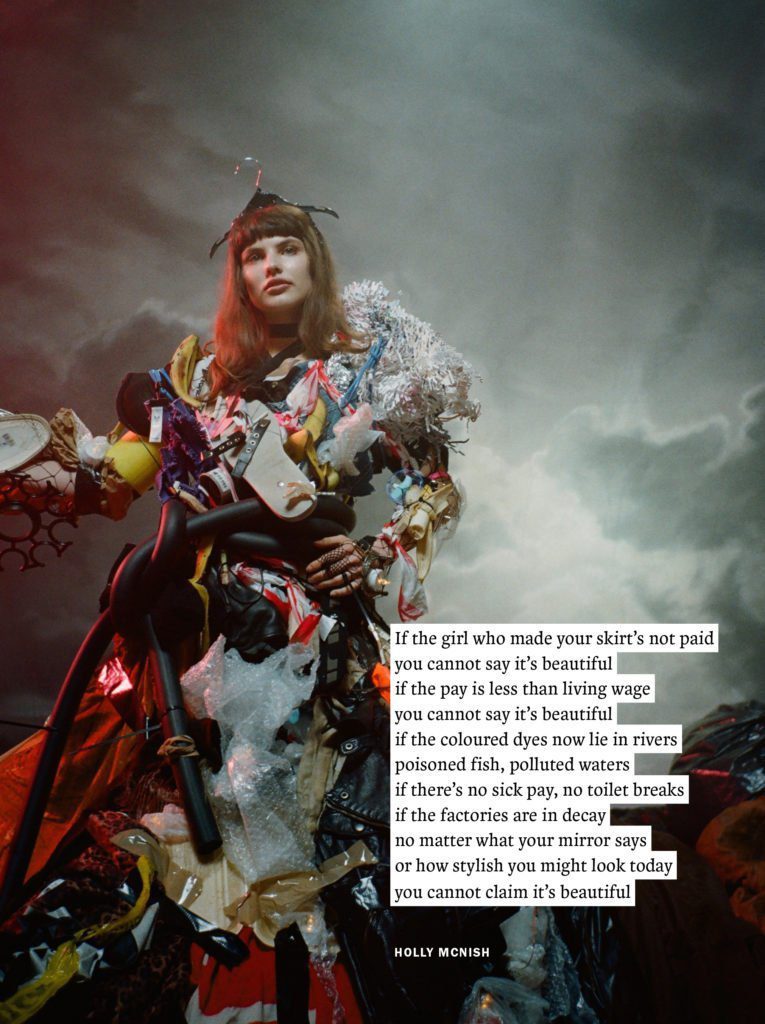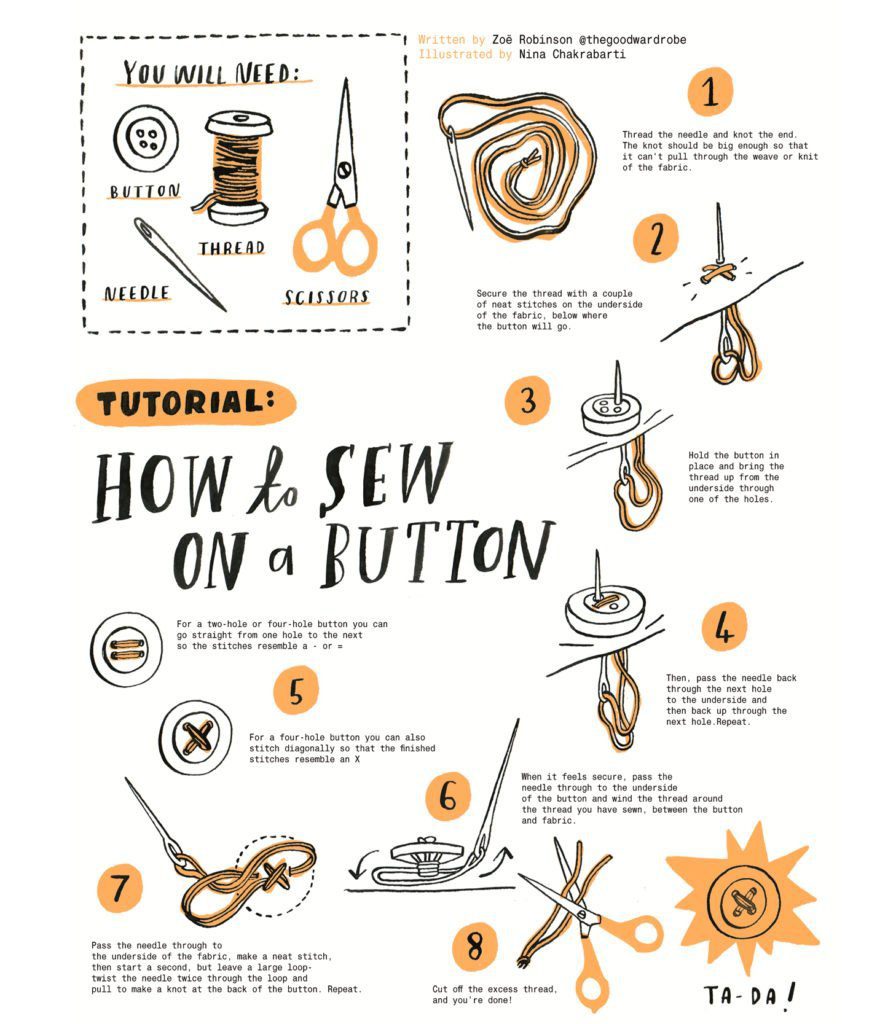Finally I received also the second issue, I mean the #2 Fashion Revolution‘s Fanzine! It was pre-order and I waited impatiently for it but that was worth the wait: 122 pages, always on recycled paper, which propose creatively with illustrations, original photos, poems and more, possibilities and ideas to prolong life of our clothes. ‘Loved Clothes Last’ is indeed the title of the fanzine and it really sounds like a declaration of love towards those clothes that last long because of excellent material and finishes or because we have repaired them a lot of times or because we have turned them into something other, even more unique and precious. Because the ways not to waste, not to throw are endless and sometimes have to do only with small tricks, such as sewing on a button off or respecting the type of washing, so be able to read the labels correctly.

After a foreword by Orsola De Castro, co-founder of Fashion Revolution, ending with an intelligent quote by Joan Crawford who says: “Care for your clothes, like the good friends they are”, follow a series of articles dealing with the the theme of waste, recycling and consumption from different points of view, such as the historical one by Jake Hall, which talks about the mythical figure of the ‘rag-and-bone man’ who, in the 19th century, scoured the streets of European cities picking up just ‘textile waste’ in a bag on his shoulders. Also important, in the 19th century too, the figure of the Scottish Benjamin Law, who obtains a hybrid ‘regenerated’ fabric combining virgin wool and rags. There are also examples of how, in different cultures, people try to reduce textile waste by creating new clothes that become symbols of the culture itself like the kimono, created by reassembling pieces of fabric re-sewn by hand.
Christina Dean, founder of Redress, environmental NGO working to reduce waste in the fashion industry, writes instead of what happens to unsold clothes: they end up super-discounted in outlets but, of course, even the super-discount is not a guarantee of sale or they are sold de-labelled or re-labelled (well, just go to the local market to find entire stalls selling new clothes, perhaps with tags but without the label!) and end up perhaps in other continents such as Australia or, again, are donated to charities like our Caritas. And then there is the less pleasant alternative to admit for brands that is destruction by incinerator.
Then there is a beautiful poem by Hollie McNish on a frame from the short movie ‘Loved Clothes Last’ produced by Fashion Revolution, the picture speaks for itself and it’s also very disturbing:


There are techniques to edit your wardrobe and tips to avoid buying new clothes, for example by using vintage or second-hand clothes or exchanging with friends or hiring.


And it looks like a real manual of use instructions when you come across the tips to get rid of stains or to understand if a garment is well finished or to decipher the washing label (which I, even now, I struggle to do, I admit it!) or to re-sew on that famous button I was talking about above.
Sass Brown then talks about seven brands to keep an eye on for their commitment in the reuse of materials recovered from the most diverse: from discarded fishing nets of the Spanish brand Ecoalf to the airbags of South Korean Recode to packaging materials of English Bethany Williams, it seems a race to those who have more imagination and that’s okay, in fact, so it should be!
But my favorite part is the one dedicated to the ‘Clothing Love Story’, that is the infinite love for a garment that we never left and never would leave; Anissa talks about her t-shirt saying “the first time I saw you I wanted you … I do not know where you are from but I know where you are going: with me for as long as possible“, Scarlett says of her flip-flops ‘age of 6 years “I wish my feet were the same size to be able to clatter around in you“. Wonderful, is not it? And you have a love story with a garment? Why do not you tell it to me?


Of the ‘Loved Clothes Last’ fanzine, I will not tell you anything else. You deserve to discover it by flipping through it.


![Mono[PA6] by Freitag, a prova di economia circolare](https://eco-a-porter.com/wp-content/uploads/2024/05/freitag_monopa6_hero_master_16zu9_fin_01.2_0-218x150.jpg)













